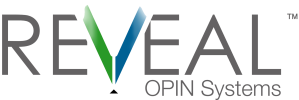Replacing Legacy Software
I own a 1996 Chevy Suburban with 241,000 miles on it. It’s old, quirky, rusty, and the air conditioning doesn’t work. All the knobs on the radio console have broken, and we managed to lose one of the control dials for the rear heater. To close the passenger door you must use Herculean force.
It’s my favorite car.
 Why? Well, first of all it can do things that none of my other cars can do. It can carry copious amounts of stuff from the Home Depot. I can transport two kids to and from college without worrying about how much junk they decide to bring. 2 adults, 4 kids, multiple suitcases and 6 bikes? No problem! I never worry about door dings or scratches, and I laugh at snowy and icy conditions in my 6,000 pound 4-wheel drive behemoth. It always starts, always runs. I love that car.
Why? Well, first of all it can do things that none of my other cars can do. It can carry copious amounts of stuff from the Home Depot. I can transport two kids to and from college without worrying about how much junk they decide to bring. 2 adults, 4 kids, multiple suitcases and 6 bikes? No problem! I never worry about door dings or scratches, and I laugh at snowy and icy conditions in my 6,000 pound 4-wheel drive behemoth. It always starts, always runs. I love that car.
There have been a couple times when we thought we might lose our “Burby”. When foundational systems have failed we’ve had to decide whether to fix or junk our old friend. Thus far, the benefit of keeping the car has outweighed the cost of repair, but as much as we all love the car, when it starts costing significant money to repair we will bid a tearful goodbye to our old friend.
Legacy Software Presents the Same Problem
Businesses face the same dilemma with their legacy software systems. For many companies, the computer systems they have running significant parts of their business are almost 30 years old, and newer more efficient software solutions would significantly upgrade both their user experience and their processes. Is it time?
Replacing Legacy Software
If you’re considering replacing your legacy software, here is an (incomplete) list of issues to consider before you make your decision:
- Maintaining old systems can be more expensive than replacing them.
- Like my Suburban, there is a point where fixing a problem is just too expensive to guarantee a reasonable ROI. You must think of your total cost of ownership, not just the out-of-pocket costs you’re considering.
- Functionality
- Do you know what you’re missing? Are there other business processes that would be served by a modern platform? Do other companies in your industry have a competitive advantage because they employ more modern systems?
- Technology goals and business goals must be aligned.
- IT and business staff often have an adversarial relationship. Business users are often (but not always) willing to stay with technologies they understand – especially if the systems work for their purposes. IT departments don’t like supporting antiquated solutions. Finding the balance involves communication and clarity of purpose. Working on a modernization project together can bring the silos together!
- End-of-life technologies can be very risky.
- Holding on to technologies that are no longer supported (or supported poorly) can open security holes in your organization. It also may be very difficult to procure the development expertise necessary to economically correct issues with your legacy solution.
- Software dependencies become a problem as newer technologies don’t always “play nice” with antiquated solutions.
- Upgrade one system and you might run into a problem with another. Modern technologies usually allow for easy integration that older systems aren’t prepared for. Modernizing will give you a quicker path to the future.
While it’s true that evidence often supports the replacement of legacy software, there are situations where woking in phases is the best plan. Sometimes a newer enterprise technology stack is fabulously expensive compared to the benefit, and your business should consider using less expensive newer technologies connected to older enterprise systems to gain functionality. (For example, if you need mobile, you might be able to connect your legacy software through a simple connector that doesn’t require a complete replacement!)
When it comes to legacy software replacement, here is not a one-size-fits-all answer for every business. The truth is, however, there will come a day when my family will have to bury our beloved Suburban, just as your legacy software will someday need to be replaced. Planning will be the key to a smooth transition…at home and at work!!
